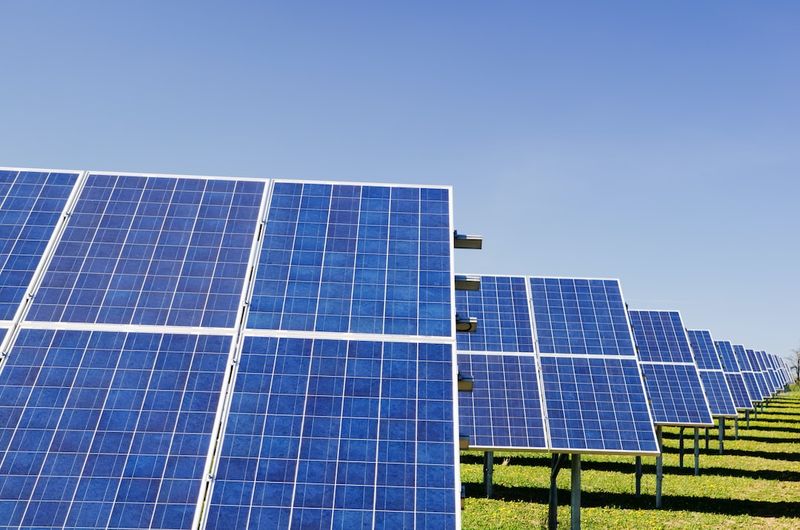Threats to the US Electric Grid: Cybersecurity Risks in Renewable Technologies
Introduction
Renewable technologies, such as solar and wind energy, have become crucial components in the transformation of the US electric grid. However, experts are now warning that these technologies also pose significant cybersecurity risks that must be addressed. In particular, the reliance on inverter-based resources, which are digitally native and often manufactured in China, is identified as a major point of weakness. The potential for cyberattacks on the grid poses a significant threat to the stability and security of the nation’s energy system.
The Vulnerability of Inverter-Based Generation
Inverter-based generation plays a crucial role in transferring renewable power to the grid. These devices convert direct current (DC) electricity generated by solar panels to alternating currents (AC) that are used by the electric grid. However, the reliance on software to distribute power and monitor the state of the grid opens up security concerns. In a 2022 Energy Department study on the cybersecurity of distributed energy resources, it was noted that inverter-based generation, including rooftop solar and large-wattage customer-owned devices, present new attack potential and can challenge traditional cyber defense postures.
Cybersecurity Risks from China
One specific concern highlighted by experts is the supply chain risk associated with the manufacturing of inverter-based resources in China. Paul Stockton, former Assistant Secretary of Defense, emphasized during a congressional hearing that China is a major producer of inverters deployed across the US. He warned that China could potentially exploit these products to conduct cyberattacks on the grid. As the dependence on inverter-based generation is expected to increase in the coming years, addressing the security risks associated with these devices becomes even more critical.
Addressing the Threats
Recognizing the significance of the cybersecurity risks in renewable technologies, efforts are being made to develop strategies to defend the grid and protect against potential attacks. One approach being considered is the implementation of a labeling system for “smart” devices, including power inverters. The Department of Energy (DOE) announced its intention to develop cybersecurity labeling for power inverters as part of a broader initiative to secure the energy sector. This labeling system aims to improve transparency and enable consumers to make informed choices about the cybersecurity of their devices.
The Role of the DOE
The DOE, through its Office of Cybersecurity, Energy Security, and Emergency Response, is taking a proactive role in enhancing the cybersecurity of energy systems. Puesh Kumar, the Director of the DOE Office, expressed the department’s commitment to collaborating with other government agencies, industry partners, and national laboratories to advance the security measures in energy systems. This collaborative effort is necessary to ensure a more secure energy sector that benefits all Americans and mitigates the risks associated with cyber threats.
Editorial: Safeguarding the Electric Grid
The challenges posed by cybersecurity risks in renewable technologies require urgent attention and comprehensive solutions. As the US transitions to a more sustainable and decentralized energy system, it is crucial that the grid’s stability and security are not compromised. The dependence on digitally native devices, particularly those manufactured by potential adversaries, raises legitimate concerns that should not be overlooked.
Internet Security and National Security
The potential for cyberattacks on critical infrastructure, such as the electric grid, should be treated as a matter of national security. It is essential to prioritize investments in securing these systems, both in terms of hardware and software. This includes strengthening supply chain security, conducting rigorous cybersecurity evaluations of devices, and promoting requirements for minimum security standards in the industry.
The Role of Government and Industry Cooperation
Government agencies, such as the DOE, must work collaboratively with industry partners, research institutions, and the cybersecurity community to develop effective strategies and policies. Partnerships with manufacturers to ensure secure and resilient devices can help minimize the risk of cyberattacks. Additionally, information sharing and coordinated response protocols should be established to enable a timely and effective response to potential threats.
Investing in Research and Development
Further investment in research and development is crucial to stay ahead of evolving cyber threats. Innovations in secure, resilient, and efficient energy systems must be prioritized to counter the tactics and techniques employed by potential adversaries. This includes the development of advanced cybersecurity technologies, secure communication protocols, and robust defense mechanisms to protect critical infrastructure.
Educating and Empowering Consumers
As the deployment of renewable technologies continues to grow, it is essential to educate and empower consumers about the cybersecurity risks associated with these systems. Clear and transparent labeling systems can help consumers make informed decisions and choose products that meet minimum cybersecurity standards. Raising awareness about the importance of securing energy systems can encourage consumers to demand secure products from manufacturers and enhance market pressures for improved cybersecurity measures.
Conclusion
The transformation of the US electric grid towards renewable technologies brings immense benefits for sustainability and energy independence. However, these technologies also introduce cybersecurity risks that must be addressed. The potential for cyberattacks on the grid, particularly through inverter-based resources, necessitates a comprehensive and collaborative approach from government, industry, and consumers. By safeguarding the electric grid against cyber threats, we can ensure the resilience, stability, and security of our energy systems for a sustainable future.

<< photo by Zbynek Burival >>
The image is for illustrative purposes only and does not depict the actual situation.
You might want to read !
- Exploring the Threat of CosmicEnergy ICS Malware: How Russia-Linked Malware Could Cause Chaos in the Electric Grid
- VirusTotal Data Leak: Unveiling the Vulnerability of Registered Customers’ Information
- Why CFOs and CISOs Need to Forge a Strong Alliance in Times of Economic Downturn
- Detecting and Mitigating Insider Threats: Strengthening SaaS Security for Effective Risk Management
- Security Vulnerability in Google Cloud Build Allows Unauthorized Access and Manipulation
- The Alarming Consequences: Google Virus Total Breach Exposes Haunting Email Addresses
- EU Spyware Firms Grapple Under US Export Restrictions
- Territorial Terrors: The Expanding Menace of Pernicious Rootkits
- VirusTotal Data Leak: Examining the Impact on Over 5,000 Users




